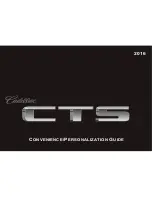
Always replace all brake discs or brake pads/
linings on an axle at the same time and only have
them replaced at a qualified specialist work-
shop. When replacing the brake discs, always
have the brake pads/linings replaced at the
same time.
Parking brake
G
WARNING
If you must brake the vehicle with the parking
brake, the braking distance is considerably
longer and the wheels could lock. This increa-
ses the risk of skidding and an accident.
Only use the parking brake to brake the vehi-
cle when the service brake is faulty. Do not
apply the parking brake too firmly. If the
wheels lock, release the parking brake until
the wheels begin turning again.
When driving on wet roads or dirt-covered sur-
faces, road salt and/or dirt may get into the
parking brake. This causes corrosion and a
reduction of braking force.
In order to prevent this, drive with the parking
brake lightly applied from time to time. When
doing so, drive for a distance of approximately
100 m at a maximum speed of 20 km/h.
The brake lamps are not illuminated when you
brake the vehicle using the parking brake.
Driving in wet conditions
Aquaplaning
G
WARNING
There is a danger of aquaplaning occurring,
even if you are driving slowly and your tyres
have sufficient tread depth, depending on the
depth of water on the road. There is a risk of
an accident.
For this reason, avoid tyre ruts and brake
carefully.
Therefore, in heavy rain or other conditions in
which aquaplaning can occur, drive as follows:
R
reduce your speed
R
avoid tyre ruts
R
apply the brakes with care
Driving on flooded roads
!
Bear in mind that vehicles travelling in front
or in the opposite direction create waves. This
may cause the maximum permissible water
depth to be exceeded.
These notes must be observed under all cir-
cumstances. You could otherwise damage
the engine, the electronics or the transmis-
sion.
If you have to drive on stretches of road on which
water has collected, please bear in mind the fol-
lowing:
R
the water level of standing water should not
be above the lower edge of the front bumper
R
do not drive faster than walking speed
Driving in winter
G
WARNING
If you shift down on a slippery road surface in
an attempt to increase the engine's braking
effect, the drive wheels could lose their grip.
This increases the risk of skidding and having
an accident.
Do not shift down for additional engine brak-
ing on a slippery road surface.
G
DANGER
If the exhaust pipe is blocked or sufficient
ventilation is not possible, toxic exhaust
fumes may enter the vehicle, especially car-
bon monoxide. This is the case, for example, if
the vehicle gets stuck in snow. There is a risk
of fatal injuries.
If you have to leave the engine or the auxiliary
heating running, keep the exhaust pipe and
the area around the vehicle free of snow. To
guarantee a sufficient supply of fresh air, open
a window on the side of the vehicle away from
the wind.
!
In the vicinity of the air intake, moveable
parts, the axles and wheel arches, the accu-
mulation of snow and ice especially if frozen
solid may:
182
Driving tips
Driving and parking
















































